| Symbol | Shape Name | Symbol Description |
| Entities | ||
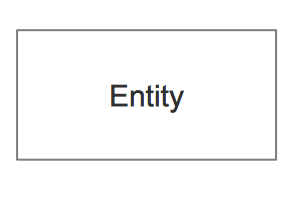 | Entity | An entity is represented by a rectangle which contains the entity’s name. |
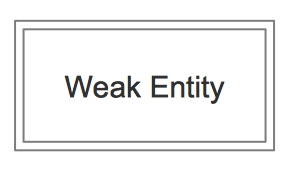 | Weak Entity | An entity that cannot be uniquely identified by its attributes alone. The existence of a weak entity is dependent upon another entity called the owner entity. The weak entity’s identifier is a combination of the identifier of the owner entity and the partial key of the weak entity. |
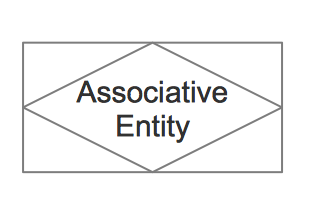 | Associative Entity | An entity used in a many-to-many relationship (represents an extra table). All relationships for the associative entity should be many |
| Attributes | ||
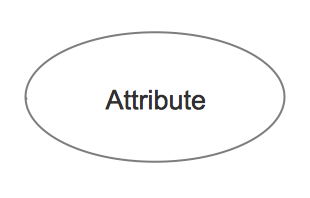 | Attribute | In the Chen notation, each attribute is represented by an oval containing atributte’s name |
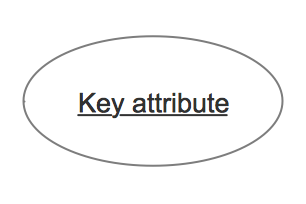 | Key attribute | An attribute that uniquely identifies a particular entity. The name of a key attribute is underscored. |
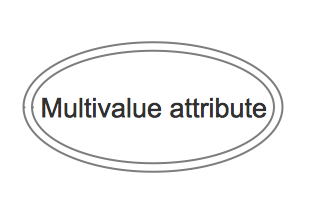 | Multivalued attribute | An attribute that can have many values (there are many distinct values entered for it in the same column of the table). Multivalued attribute is depicted by a dual oval. |
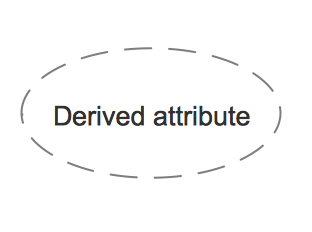 | Derived attribute | An attribute whose value is calculated (derived) from other attributes. The derived attribute may or may not be physically stored in the database. In the Chen notation, this attribute is represented by dashed oval. |
| Relationships | ||
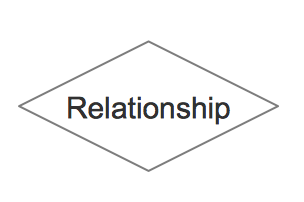 | Strong relationship | A relationship where entity is existence-independent of other entities, and PK of Child doesn’t contain PK component of Parent Entity. A strong relationship is represented by a single rhombus |
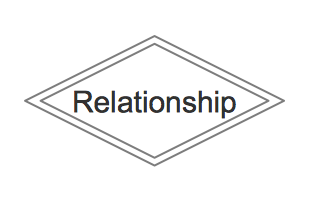 | Weak (identifying) relationship | A relationship where Child entity is existence-dependent on parent, and PK of Child Entity contains PK component of Parent Entity. This relationship is represented by a double rhombus. |
Entity Relationship Diagram Symbols — Crow’s Foot notation
| Symbol | Meaning | |
| Relationships (Cardinality and Modality) | ||
 | Zero or One | |
 | One or More | |
 | One and only One | |
 | Zero or More | |
| Many - to - One | ||
 | a one through many notation on one side of a relationship and a one and only one on the other | |
 | a zero through many notation on one side of a relationship and a one and only one on the other | |
 | a one through many notation on one side of a relationship and a zero or one notation on the other | |
 | a zero through many notation on one side of a relationship and a zero or one notation on the other | |
| Many - to - Many | ||
 | a zero through many on both sides of a relationship | |
 | a zero through many on one side and a one through many on the other | |
 | a one through many on both sides of a relationship | |
 | a one and only one notation on one side of a relationship and a zero or one on the other | |
 | a one and only one notation on both sides | |
No comments:
Post a Comment